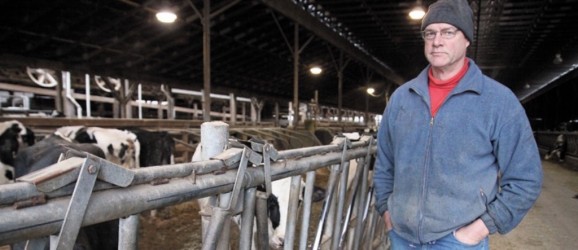This content has been archived as it may no longer be accurate or relevant.Mary MacArthur, The Western Producer; 21 January 2016
As manager of Nicola Ranch, Matt Williams takes safety seriously.
Four times a year, workers complete a full safety inspection of the farm and ranch. Each month, they attend a formalized safety meeting to discuss safety topics, such as power saw or seat belt safety.
Each day, they hold “tailgate” farm safety meetings to remind workers to inspect equipment before hopping into a tractor or to ensure ice hasn’t built up in front of a garage door.
His office on the southern British Columbia ranch contains 21 farm safety binders on how to run a ranch to be compliant with WorkSafe BC regulations.
However, Williams and other B.C. ranchers have had more than 30 years to get used to the stringent provincial farm safety rules.
He believes Alberta farmers and ranchers are about to get a shock when the province starts to enforce the occupational health and safety rules contained in Bill 6, the controversial farm safety legislation Alberta passed just before Christmas.
“It took a tremendous amount of work and it takes a lot of work to keep this going. If the Alberta government decides to follow the B.C. model, then the farm operators in Alberta will have a lot of work to do,” Williams said.
WorkSafe BC is B.C.’s Workers’ Compensation Board program, and all 5,000 of the province’s farms and ranches with employees must carry WCB coverage.
This year, WCB premiums increased for ranches and dairy and horse farms. They are based on a combination of industry and individual claims, and the claims involving large animals reflect continuing injuries in the industry.
Every farm and ranch starts with its own industry average.
An individual farm can receive a 50 percent premium discount after three and a half years with no claims. On the flip side, a farm with a lot of claims can be charged a 100 percent surcharge, or doubling of WCB premiums.
“If you have a significant amount of claims that are very, very costly and you’re costing the company, your insurance will continue to go up to offset that cost,” said Wendy Bennett, executive director of AgSafe, the not-for-profit agency designed to educate and help farmers implement WorkSafe BC’s farm safety programs.
Premiums for greenhouse operators have dropped from $3.40 per $100 of salary in 2009 to $1.82 in 2016. Berry and orchard grower premiums dropped from $2.81 per $100 salary in 2009 to $1.57 in 2016.
Ranchers are not so lucky. Their premiums jumped to $8.39 per $100 salary in 2011 from $6.54 in 2009, then dropped to $5.65 in 2015 and this year will increase to $6.22.
“Unfortunately, ranching, dairy and horse rates all went up this year, largely because the injuries that happened in those industries are serious, like fractures, and they take a long time to heal. The time loss is substantial,” said Bennett.
Trying to reduce premiums for ranches is one of the reasons Williams promotes a strong safety culture.
“Because we’re running the safety program we have, they’re going to go down. There is a significant cost to WCB,” said Williams.
“If you run safety meetings and all these things, then ultimately less workers get injured and that will be reflected in the rate you pay.”
An employee accident two years ago on David Janssens’ dairy farm near Surrey resulted in slightly higher WorkSafe BC premiums. However, he doesn’t begrudge them because they protect his six employees and his 800-acre, 550-cow farm.
Janssens also doesn’t mind that WorkSafe BC inspectors visit his farm to check things such as safety signage and roll-over protection on tractors. It was the inspector who suggested Janssens include safety talks in his regular farm meetings.
Every new employee must read a booklet on handling dairy cattle and working on a farm and then sign that they have read it.
The booklets help new employees, but good animal handling practices can’t be learned from a book, he said.
“Not everyone has sense around a 1,500 pound animal,” said Janssens, who has built extra gates as escape routes to allow workers to quickly get out of cattle pens.
“We’re all running professional businesses, and we have a responsibility to our employees to pay them fairly, treat them fairly and provide them a safe work environment.”
Stan Vander Waal, chair of the BC Agriculture Council and the owner of greenhouses in B.C. and Alberta, has provided WCB coverage in his Alberta greenhouses for nine years, even though it wasn’t required.
“I believe as farmers we owe our workers the same safety nets as any other worker working in other sectors in Alberta,” he said in an email.
“I recommend Alberta farmers not oppose WCB coverage, as it actually makes farmers look bad, as if they don’t care for the welfare of our workers should they be injured. Farmers should save their ‘fight’ energy for bigger things.”
Click here to see the original article
Share this Post

